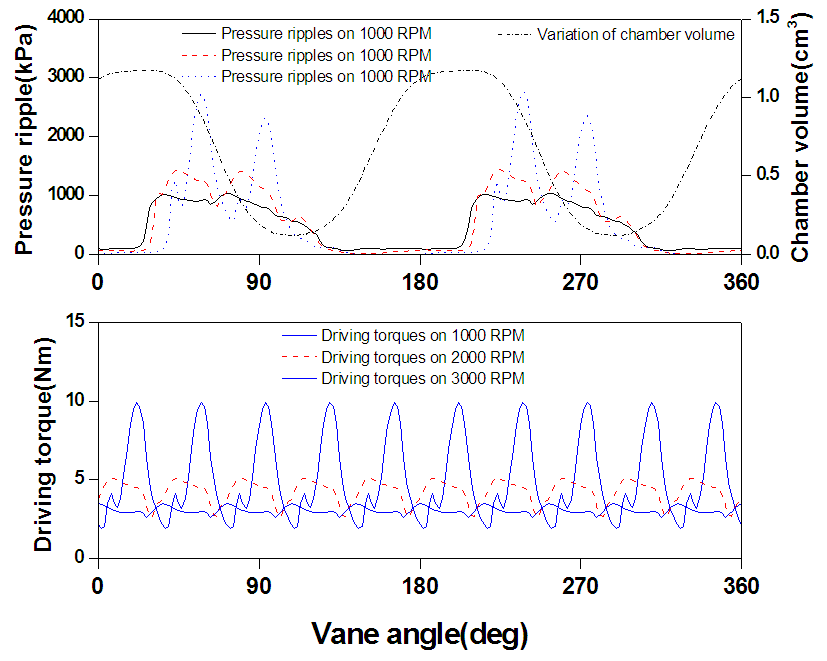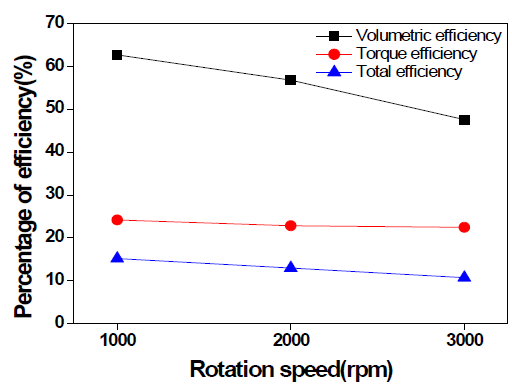-
Paper Information
- Next Paper
- Paper Submission
-
Journal Information
- About This Journal
- Editorial Board
- Current Issue
- Archive
- Author Guidelines
- Contact Us
Journal of Mechanical Engineering and Automation
p-ISSN: 2163-2405 e-ISSN: 2163-2413
2016; 6(4): 75-77
doi:10.5923/j.jmea.20160604.01

Performance Analysis of Power Steering Oil Pump Applying Al Material
Yunchan Shin1, Gwanghyun Im1, Honghyun Cho2
1Graduate School of Mechanical Engineering, Chosun University, South Korea
2Department of Mechanical Engineering, Chosun University, South Korea
Correspondence to: Honghyun Cho, Department of Mechanical Engineering, Chosun University, South Korea.
| Email: |  |
Copyright © 2016 Scientific & Academic Publishing. All Rights Reserved.
This work is licensed under the Creative Commons Attribution International License (CC BY).
http://creativecommons.org/licenses/by/4.0/

Oil pump can reduce the weight by using the Al material. In addition, it is possible to make a low noise, high efficiency, and high power. In this study, the analytical study on the performance characteristics of power steering oil pump was carried out theoretically by using PUMPLINX. As a result, at the 1000 RPM which is idle state, the discharge flow rate and driving torque are very low. As the rotational speed increases, the fluctuation of discharge pressure increases and the total efficiency decreases. When the rotation speed is 1000, 2000, 3000 rpm, the volumetric efficiency is 62.7%, 56.8%, 47.6% and torque efficiency is 24.2%, 22.8%, 22.5, respectively. Total efficiency is 15.16%, 12.96%, and 10.7%, respectively.
Keywords: Oil pump, Discharge flow rate, Volumetric efficiency, Torque efficiency, Total efficiency
Cite this paper: Yunchan Shin, Gwanghyun Im, Honghyun Cho, Performance Analysis of Power Steering Oil Pump Applying Al Material, Journal of Mechanical Engineering and Automation, Vol. 6 No. 4, 2016, pp. 75-77. doi: 10.5923/j.jmea.20160604.01.
Article Outline
1. Introduction
- Recently, there is a rising interest on the problem for decreasing weight of commercial vehicle. Oil pump can reduce the weight by using the Al material. In addition, it is possible to make a low noise, high efficiency, and high power. Power steering can reduce the force needed to turn the steering wheels of automotive. Also, it is mainly equipped into the midsize and full size car in order to improve steering ability. The hydraulic device is more complicated structure than the electric device and is about 4~5 kg heavier than that. However, the hydraulic device is superior on steering ability and it can make a high power.Hydraulic power steering system consists of a pressure balanced vane pump, steering gear and pulsation damping hydraulic hoses. Vane pump supplying hydraulic in power source transports the working fluid to the discharge from suction. The chamber between a cam ring, vanes and rotor causes periodically volume change due to rotational motion of rotor. Some study of oil pump using Al material has been carried out, but it is so insufficient. Especially, there has been carried out a little study for oil pump applying hydraulic power steering and discharge pressure of high pressure.In this study, the analytical study on the performance characteristics of power steering oil pump was carried out theoretically by using PUMPLINX. The result of this study is intended to provide required basic data for designing high efficiency power steering vane pump.
2. Analysis Modeling and Method
- In this study, the performance characteristic of a power steering oil pump was analyzed theoretically by extracting the flow field of the vane pump. The vane tip gap of the simulation was used with the real vane value in order to ensure the reliable result. Grid number was formed by131,793 totally and the flow field was shown in Fig. 1.
 | Figure 1. Schematic of a balanced vane pump |
|
 | (1) |
 | (2) |
 | (3) |
 | (4) |
 | (5) |
 | (6) |
 | (7) |
 | (8) |
3. Results and Discussion
- Fig. 2 shows the pressure ripple, driving torque and chamber volume according to vane angle for variable rotor speeding. Pressure ripple and torque curve are not changed when rotation speed increases from 1000 rpm to 2000 rpm, while it is rapidly changed when it increases from 2000 to 3000 rpm. It can be found, as the compression starts, the pressure increases significantly. The reason for pressure drop in middle angle of compression is because of the back flow effect at the outlet [2]. Driving torque increases where vane is located and then was decreases. This tendency is repeated periodically. The average torque increases linearly with rotation speed as the rotating speed increases. Besides, the frequency of pressure increases significantly.
 | Figure 2. Pressure ripple and driving torque in chamber with variation of vane angle and chamber volume |
 | Figure 3. Volumetric, torque and total efficiency with variation of rotation speed |
4. Conclusions
- The analytical study on the performance characteristics of a power steering oil pump was carried out, and the detail results obtained through this study are as follows.1) Pressure ripple and torque curve are not changed when rotation speed increases from 1000 rpm to 2000 rpm, while it is rapidly changed when it increases from 2000 to 3000 rpm. It can be found, as the compression starts, the pressure increases significantly. The reason for pressure drop in middle angle of compression is because of the back flow effect at the outlet. 2) Volume efficiency decreases continually as rotation speed increases. It is because the cavitation in the chamber increases. In case that rotation speed is 1000, 2000, and 3000 rpm, the volume efficiency is 62.7%, 56.8%, and 47.6%, respectively. In addition, torque efficiency is 24.18%, 22.81%, 22.45%, respectively. Total efficiency is 15.16%, 12.96%, 10.7% respectively.
ACKNOWLEDGMENTS
- This work (Grants No. 2014-0506) was supported by Business for Academic-industrial Cooperative establishments funded Korea Small and Medium Business Administration in 2014.
 Abstract
Abstract Reference
Reference Full-Text PDF
Full-Text PDF Full-text HTML
Full-text HTML